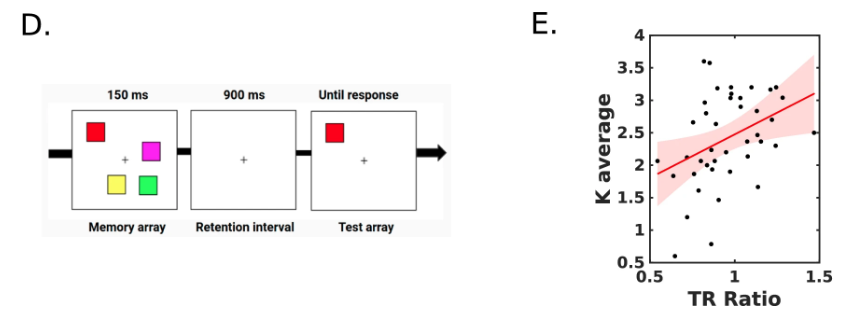
🎉New paper in @SciReports
👁️🖱️We created a digital version of a widely used neuropsychological test of #ExecutiveFunctions using hand and #eyetracking
Linari I., Juantorena G., Ibañez, Petroni A., Kamienkowski J.
go.nature.com/3L5acUa
🧵1/n
👁️🖱️We created a digital version of a widely used neuropsychological test of #ExecutiveFunctions using hand and #eyetracking
Linari I., Juantorena G., Ibañez, Petroni A., Kamienkowski J.
go.nature.com/3L5acUa
🧵1/n
🖥️We made a digital version of the #TrailMakingTest and recorded hand and eye movements
To perform an external validation of the cTMT measures, we administered an executive functions battery and a canonical visual working memory test
To perform an external validation of the cTMT measures, we administered an executive functions battery and a canonical visual working memory test

Like in the original TMT, participants performed two types of trials:
▶️ TMT-A: Connect numbers in ascending order.
▶️ TMT-B: Alternate between numbers and letters.
▶️ TMT-A: Connect numbers in ascending order.
▶️ TMT-B: Alternate between numbers and letters.
The number of fixations, but not fixation or saccade duration, showed a clear difference between both conditions, with a higher number in TMT-B 

We classified fixations during the TMT in three phases:🟢Exploratory🔴Planning and 🔵monitoring.
We found significant correlations between the number of fixations ratio in exploration and planning phases and the time to complete the task. 

We derived an internal measure of visual working memory using eye and hand movements in the cTMT. This internal measure correlates with performance in TMT-B with respect to TMT-A. 

We also compared the derived visual working memory measure with the individual performance in a validated visual working memory task (Change Detection Task) and found a moderate correlation 

Additionally, we derived an internal measure of inhibitory control based on correct or false target detections and proposed it as an potential estimation of inhibitory control. 

To summarise,
We validated the overall performance of the computerised version of the task (cTMT) with external measures and explored the eye movements’ features in different phases of the task.
We validated the overall performance of the computerised version of the task (cTMT) with external measures and explored the eye movements’ features in different phases of the task.
💡The cTMT surpasses many of the gaps of the standard TMT:
1⃣ It provides multiple fine-grained subscores of the underlying EFs, which are critical for analysing more specific deficits in different pathologies.
1⃣ It provides multiple fine-grained subscores of the underlying EFs, which are critical for analysing more specific deficits in different pathologies.
2⃣ This version provides multiple behavioural measures that allow a more robust characterization of the participant’s performance and multiple features for machine learning multimodal and multi-feature analysis;
3⃣ It also controls the targets' spatial configuration bias present in the classic TMT.
Thus, we propose that the cTMT could become a powerful tool to improve the accuracy of diagnosis in a wide variety of pathologies where the EFs are affected, such as #Alzheimer’s Disease or Fronto-Temporal #Dementias.
Open Access publication: go.nature.com/3L5acUa
Authors: Linari I., Juantorena G. (@GJuantorena), Ibañez A. (@AgustinMIbanez ), Petroni A. (@agustin_petroni ) , Kamienkowski J. (@JKamienkowski)
Authors: Linari I., Juantorena G. (@GJuantorena), Ibañez A. (@AgustinMIbanez ), Petroni A. (@agustin_petroni ) , Kamienkowski J. (@JKamienkowski)
• • •
Missing some Tweet in this thread? You can try to
force a refresh




